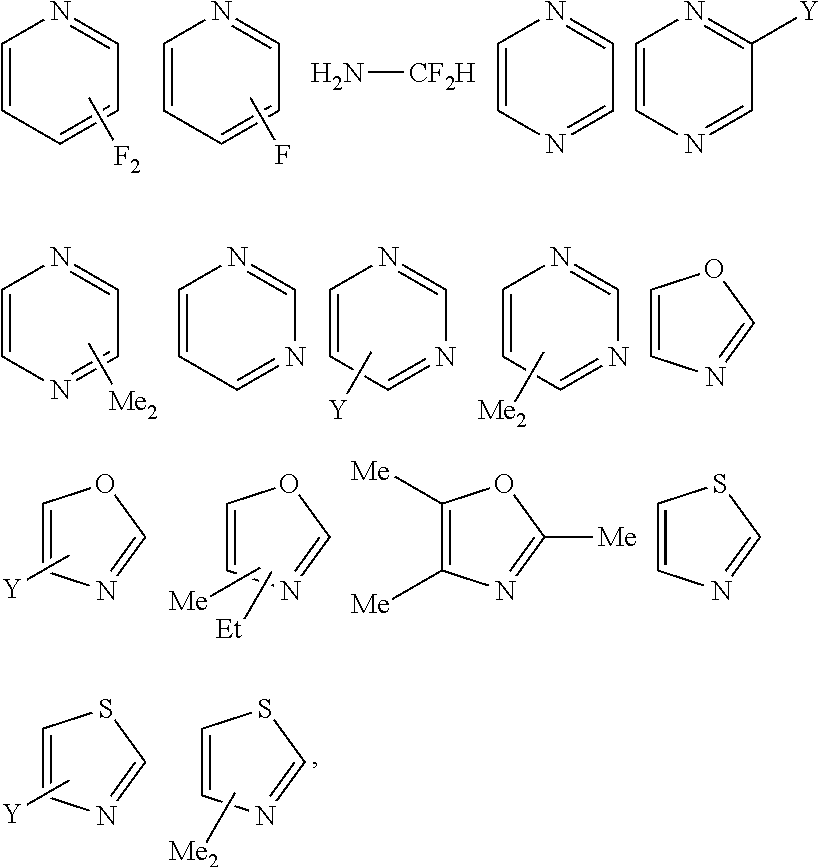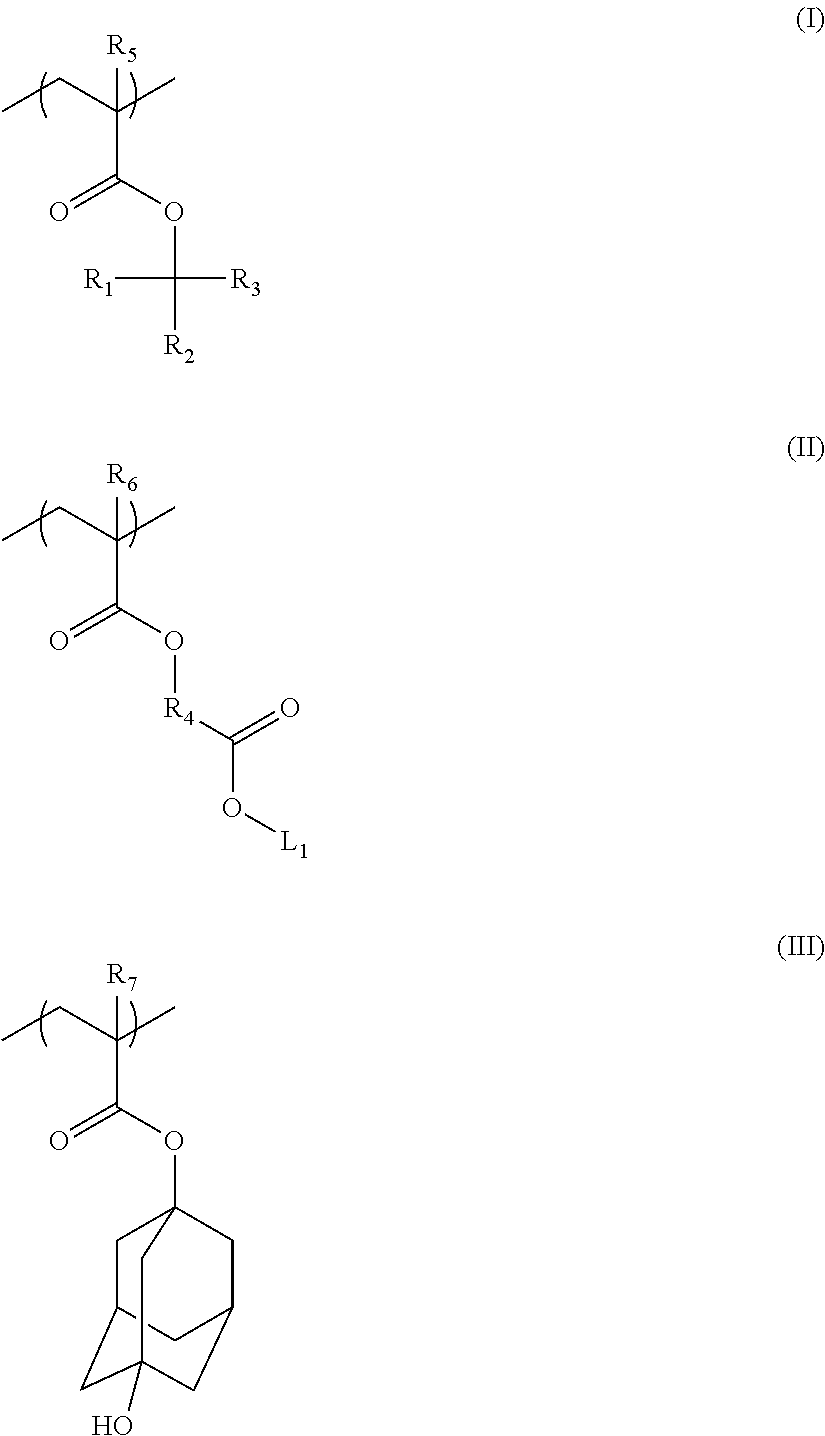Ionic thermal acid generators for low temperature applications
- Summary
- Abstract
- Description
- Claims
- Application Information
AI Technical Summary
Benefits of technology
Problems solved by technology
Method used
Image
Examples
example 1
[0095]A positive chemically amplified photoresist composition (Resist A) was prepared by combining 1.28 g Polymer A (M1 / M2 / M3=4 / 4 / 2 mole ratio, Mw=10K) and 1.28 g Polymer B (M1 / M2 / M3 / M4=30 / 35 / 15 / 20, Mw=7K),
[0096]0.56 g photoacid generator of 4-(t-butylphenyl)tetramethylenesulfonium 4-(adamantane-1-carbonyloxy)-1,1,2,2-tetrafluorobutane sulfonate (TMS-Ad-TFBS), 0.078 g quencher of Trihydroxymethyl-carbamic acid tert-butyl ester, 0.003 g POLYFOX 656 surfactant, 33.56 g propylene glycol methyl ether acetate and 63.25 g methyl-2-hydroxy-iso-butyrate.
example 2
Coating and Processing of Resist
[0097]Resist A (Example 1) was spin coated on organic bottom antireflective coating (BARC AR124 23 nm / AR26N 77 nm) over 12 inch silicon wafers and softbaked at 95° C. / 60 sec. Then 30 nm 0C2000 topcoat (from Dow Chemical Company) was applied on the resist. The coated wafer was exposed on ASML ArF 1900i with NA=1.30, Dipole 35Y illumination (0.9 / 0.635sigma), plus x polarization, and then post-exposure baked at 80° C. / 60 sec. The coated wafers were then treated with 0.26N (normal) aqueous tetramethylammonium hydroxide solution to develop a 45 nm 1:1 line and space pattern imaged resist layer.
example 3
Chemical Trim Overcoat Composition (CTO1)
[0098]2.318 g copolymer of t-butyl acrylate / methacrylic acid (7 / 3 of mole ratio), 0.132 g of 3-Fluoropyridinium perfluorobutanesulfonate, 19.51 g decane and 78.04 g 2-methyl-1-butynol were mixed until all components dissolve and then filtered by 0.2 um Nylon filter. A 60 nm film of CTO1 was spin-coated on resist with 45 nm 1:1 line and space patterns, baked at 70° C., and developed in 2.38% TMAH developer for 12s with TEL Lithus GP nozzle.
PUM
| Property | Measurement | Unit |
|---|---|---|
| Temperature | aaaaa | aaaaa |
| Acidity | aaaaa | aaaaa |
| Antireflective | aaaaa | aaaaa |
Abstract
Description
Claims
Application Information
 Login to View More
Login to View More - R&D
- Intellectual Property
- Life Sciences
- Materials
- Tech Scout
- Unparalleled Data Quality
- Higher Quality Content
- 60% Fewer Hallucinations
Browse by: Latest US Patents, China's latest patents, Technical Efficacy Thesaurus, Application Domain, Technology Topic, Popular Technical Reports.
© 2025 PatSnap. All rights reserved.Legal|Privacy policy|Modern Slavery Act Transparency Statement|Sitemap|About US| Contact US: help@patsnap.com



